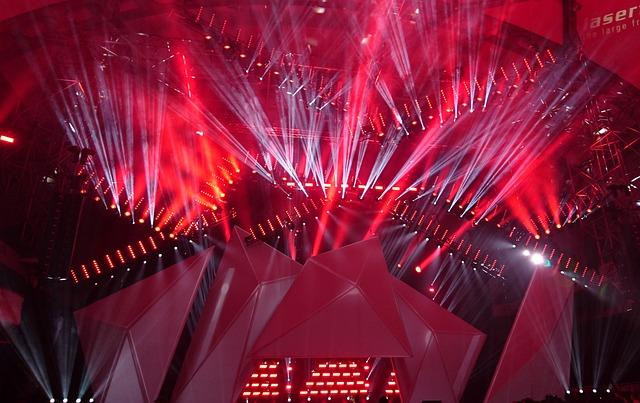Respiration (শ্বসন)
Electromagnetism (ইলেক্ট্রোম্যাগনেটিজম)Electromagnetism is a branch of physics that deals with the study of electromagnetic forces, fields, and interactions. It encompasses the behavior of electric charges and currents, magnetic fields, electromagnetic waves, and their mutual interactions according to Maxwell's equations and the principles of electromagnetism.
Electric Charge and Coulomb's Law:
Electromagnetism begins with the concept of electric charge, which is a fundamental property of matter. Electric charges can be positive or negative, and like charges repel each other, while opposite charges attract. Coulomb's law quantifies the force between electric charges, stating that the force is directly proportional to the product of the charges and inversely proportional to the square of the distance between them.
Electric Fields and Gauss's Law:
Electric fields are regions of space where electric charges experience a force. Electromagnetism studies the behavior of electric fields, their intensity, direction, and distribution around charged objects. Gauss's law relates the electric flux through a closed surface to the total charge enclosed by the surface, providing a mathematical relationship between electric fields and electric charges.
Electric Potential and Capacitance:
Electric potential, or voltage, is a measure of electric potential energy per unit charge. Electromagnetism examines electric potential, electric potential difference, and their relationship to electric fields. Capacitance, a property of capacitors, quantifies the ability of a system to store electric charge, with capacitance depending on the geometry and material properties of the system.
Electric Current and Ohm's Law:
Electric current is the flow of electric charge through a conductor, typically driven by the movement of electrons. Electromagnetism studies electric circuits, their components (such as resistors, capacitors, and inductors), and the behavior of electric currents. Ohm's law relates the current flowing through a conductor to the voltage across it and its resistance, stating that current is directly proportional to voltage and inversely proportional to resistance.
Magnetic Fields and Ampère's Law:
Magnetic fields are regions of space where magnetic materials and moving charges experience a force. Electromagnetism investigates the behavior of magnetic fields, their strength, direction, and interaction with electric currents. Ampère's law relates the magnetic field around a closed loop to the electric current passing through the loop, providing a quantitative description of the magnetic field produced by electric currents.
Electromagnetic Induction and Faraday's Law:
Electromagnetic induction is the process by which a changing magnetic field induces an electromotive force (EMF) or voltage in a conductor. Electromagnetism explores Faraday's law of electromagnetic induction, which states that the induced EMF in a circuit is proportional to the rate of change of magnetic flux through the circuit. This phenomenon is the basis for the operation of electric generators, transformers, and inductors.
Electromagnetic Waves and Maxwell's Equations:
Electromagnetism studies electromagnetic waves, which are transverse waves consisting of oscillating electric and magnetic fields propagating through space at the speed of light. Maxwell's equations, a set of four fundamental equations formulated by James Clerk Maxwell, describe the behavior of electric and magnetic fields and their relationship to electric charges and currents. They unify electricity and magnetism into a single electromagnetic force and predict the propagation of electromagnetic waves, including light.
Applications and Technologies:
Electromagnetism has numerous applications in technology, communication, energy, transportation, and medicine. It forms the basis for electrical engineering, telecommunications, electronics, power generation, magnetic resonance imaging (MRI), and various electromechanical devices.
Electromagnetism is a fundamental aspect of physics with widespread applications in technology, industry, and everyday life. Its principles and phenomena govern the behavior of electric and magnetic fields, electromagnetic waves, and the interactions between charged particles and magnetic materials.
Electric Charge and Coulomb's Law:
Electromagnetism begins with the concept of electric charge, which is a fundamental property of matter. Electric charges can be positive or negative, and like charges repel each other, while opposite charges attract. Coulomb's law quantifies the force between electric charges, stating that the force is directly proportional to the product of the charges and inversely proportional to the square of the distance between them.
Electric Fields and Gauss's Law:
Electric fields are regions of space where electric charges experience a force. Electromagnetism studies the behavior of electric fields, their intensity, direction, and distribution around charged objects. Gauss's law relates the electric flux through a closed surface to the total charge enclosed by the surface, providing a mathematical relationship between electric fields and electric charges.
Electric Potential and Capacitance:
Electric potential, or voltage, is a measure of electric potential energy per unit charge. Electromagnetism examines electric potential, electric potential difference, and their relationship to electric fields. Capacitance, a property of capacitors, quantifies the ability of a system to store electric charge, with capacitance depending on the geometry and material properties of the system.
Electric Current and Ohm's Law:
Electric current is the flow of electric charge through a conductor, typically driven by the movement of electrons. Electromagnetism studies electric circuits, their components (such as resistors, capacitors, and inductors), and the behavior of electric currents. Ohm's law relates the current flowing through a conductor to the voltage across it and its resistance, stating that current is directly proportional to voltage and inversely proportional to resistance.
Magnetic Fields and Ampère's Law:
Magnetic fields are regions of space where magnetic materials and moving charges experience a force. Electromagnetism investigates the behavior of magnetic fields, their strength, direction, and interaction with electric currents. Ampère's law relates the magnetic field around a closed loop to the electric current passing through the loop, providing a quantitative description of the magnetic field produced by electric currents.
Electromagnetic Induction and Faraday's Law:
Electromagnetic induction is the process by which a changing magnetic field induces an electromotive force (EMF) or voltage in a conductor. Electromagnetism explores Faraday's law of electromagnetic induction, which states that the induced EMF in a circuit is proportional to the rate of change of magnetic flux through the circuit. This phenomenon is the basis for the operation of electric generators, transformers, and inductors.
Electromagnetic Waves and Maxwell's Equations:
Electromagnetism studies electromagnetic waves, which are transverse waves consisting of oscillating electric and magnetic fields propagating through space at the speed of light. Maxwell's equations, a set of four fundamental equations formulated by James Clerk Maxwell, describe the behavior of electric and magnetic fields and their relationship to electric charges and currents. They unify electricity and magnetism into a single electromagnetic force and predict the propagation of electromagnetic waves, including light.
Applications and Technologies:
Electromagnetism has numerous applications in technology, communication, energy, transportation, and medicine. It forms the basis for electrical engineering, telecommunications, electronics, power generation, magnetic resonance imaging (MRI), and various electromechanical devices.
Electromagnetism is a fundamental aspect of physics with widespread applications in technology, industry, and everyday life. Its principles and phenomena govern the behavior of electric and magnetic fields, electromagnetic waves, and the interactions between charged particles and magnetic materials.
No Data Found of MCQ Question
No Data Found of GK





